display TOYOTA RAV4 EV 2012 1.G Workshop Manual
[x] Cancel search | Manufacturer: TOYOTA, Model Year: 2012, Model line: RAV4 EV, Model: TOYOTA RAV4 EV 2012 1.GPages: 520, PDF Size: 8.29 MB
Page 232 of 520
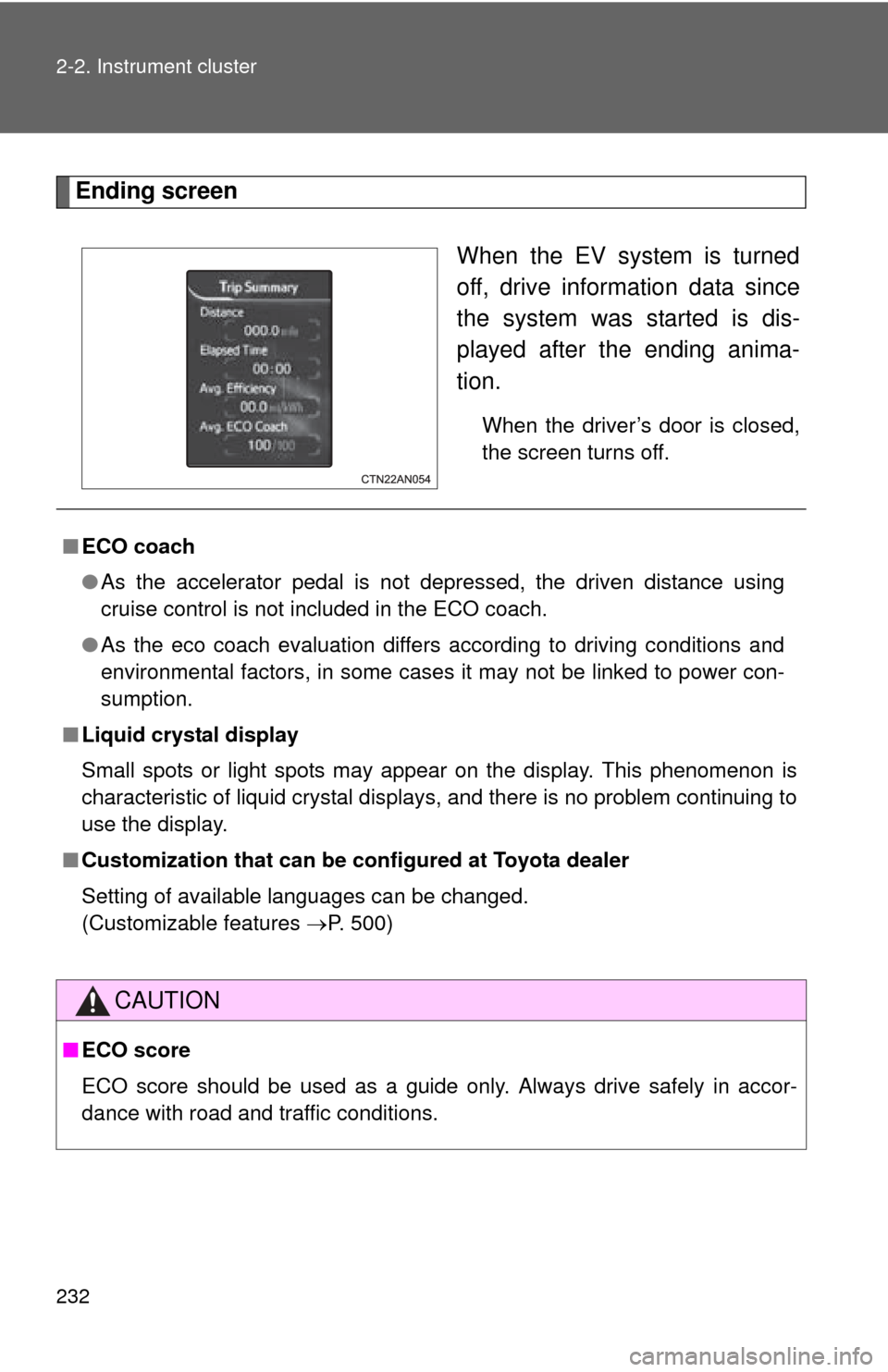
232 2-2. Instrument cluster
Ending screenWhen the EV system is turned
off, drive information data since
the system was started is dis-
played after the ending anima-
tion.
When the driver’s door is closed,
the screen turns off.
■ECO coach
●As the accelerator pedal is not depressed, the driven distance using
cruise control is not included in the ECO coach.
● As the eco coach evaluation differs according to driving conditions and
environmental factors, in some cases it may not be linked to power con-
sumption.
■ Liquid crystal display
Small spots or light spots may appear on the display. This phenomenon is
characteristic of liquid crystal displays, and there is no problem continuing to
use the display.
■ Customization that can be co nfigured at Toyota dealer
Setting of available languages can be changed.
(Customizable features P. 500)
CAUTION
■ECO score
ECO score should be used as a guide only. Always drive safely in accor-
dance with road and traffic conditions.
Page 233 of 520

233
2-2. Instrument cluster
2
When driving
NOTICE
■
The multi-information disp lay at low temperatures
Allow the interior of the vehicle to warm up before using the liquid crystal
information display. At extremely low temperatures, the information display
monitor may respond slowly, and display changes may be delayed.
Page 245 of 520
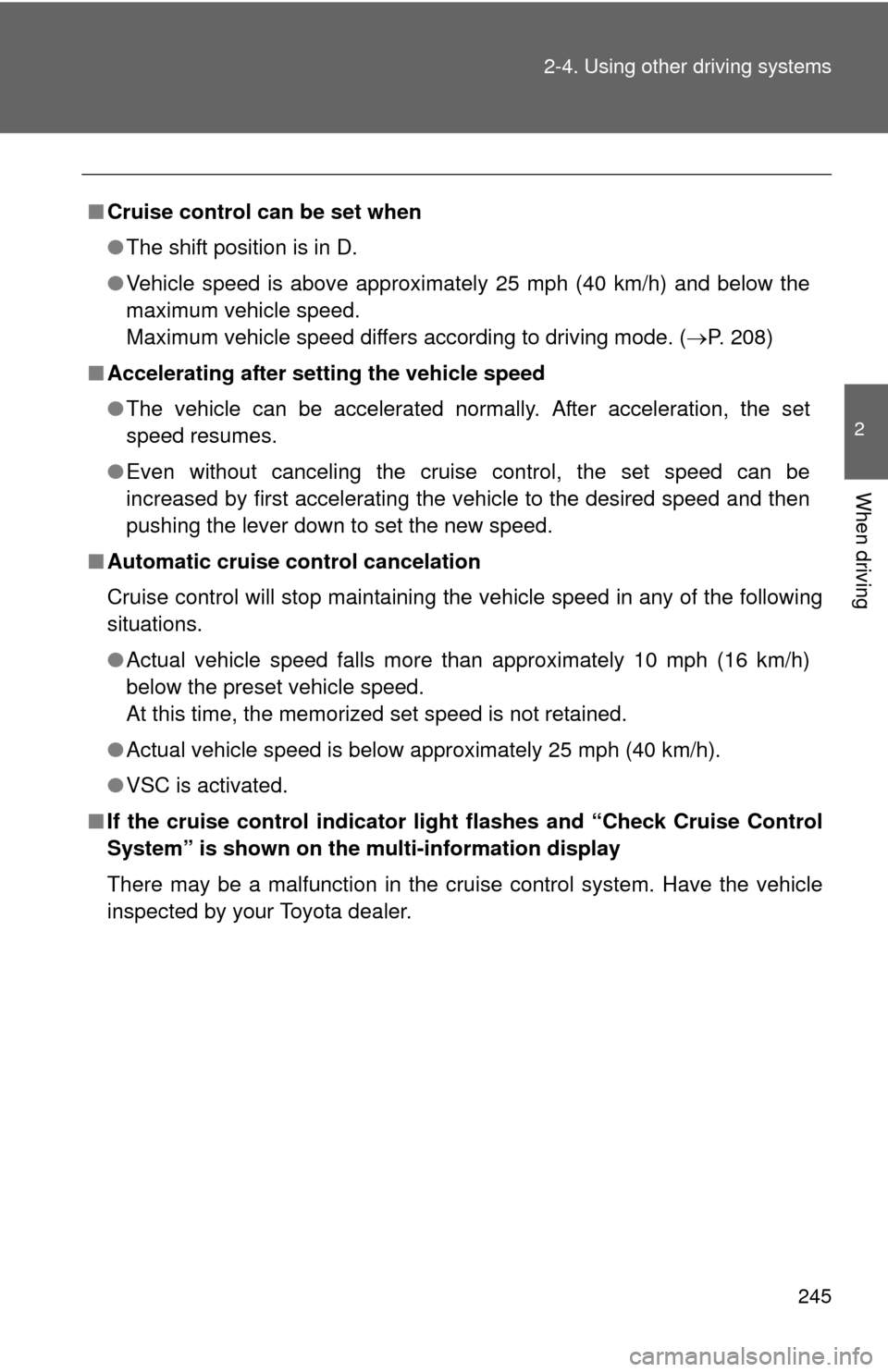
245
2-4. Using other
driving systems
2
When driving
■Cruise control can be set when
●The shift position is in D.
● Vehicle speed is above approximately 25 mph (40 km/h) and below the
maximum vehicle speed.
Maximum vehicle speed differs according to driving mode. (P. 208)
■ Accelerating after setting the vehicle speed
●The vehicle can be accelerated normally. After acceleration, the set
speed resumes.
● Even without canceling the cruise control, the set speed can be
increased by first accelerating the vehicle to the desired speed and then
pushing the lever down to set the new speed.
■ Automatic cruise control cancelation
Cruise control will stop maintaining the vehicle speed in any of the following
situations.
●Actual vehicle speed falls more than approximately 10 mph (16 km/h)
below the preset vehicle speed.
At this time, the memorized set speed is not retained.
● Actual vehicle speed is below approximately 25 mph (40 km/h).
● VSC is activated.
■ If the cruise control indicator light flashes and “Check Cruise Control
System” is shown on the multi-information display
There may be a malfunction in the cruise control system. Have the vehicle
inspected by your Toyota dealer.
Page 247 of 520
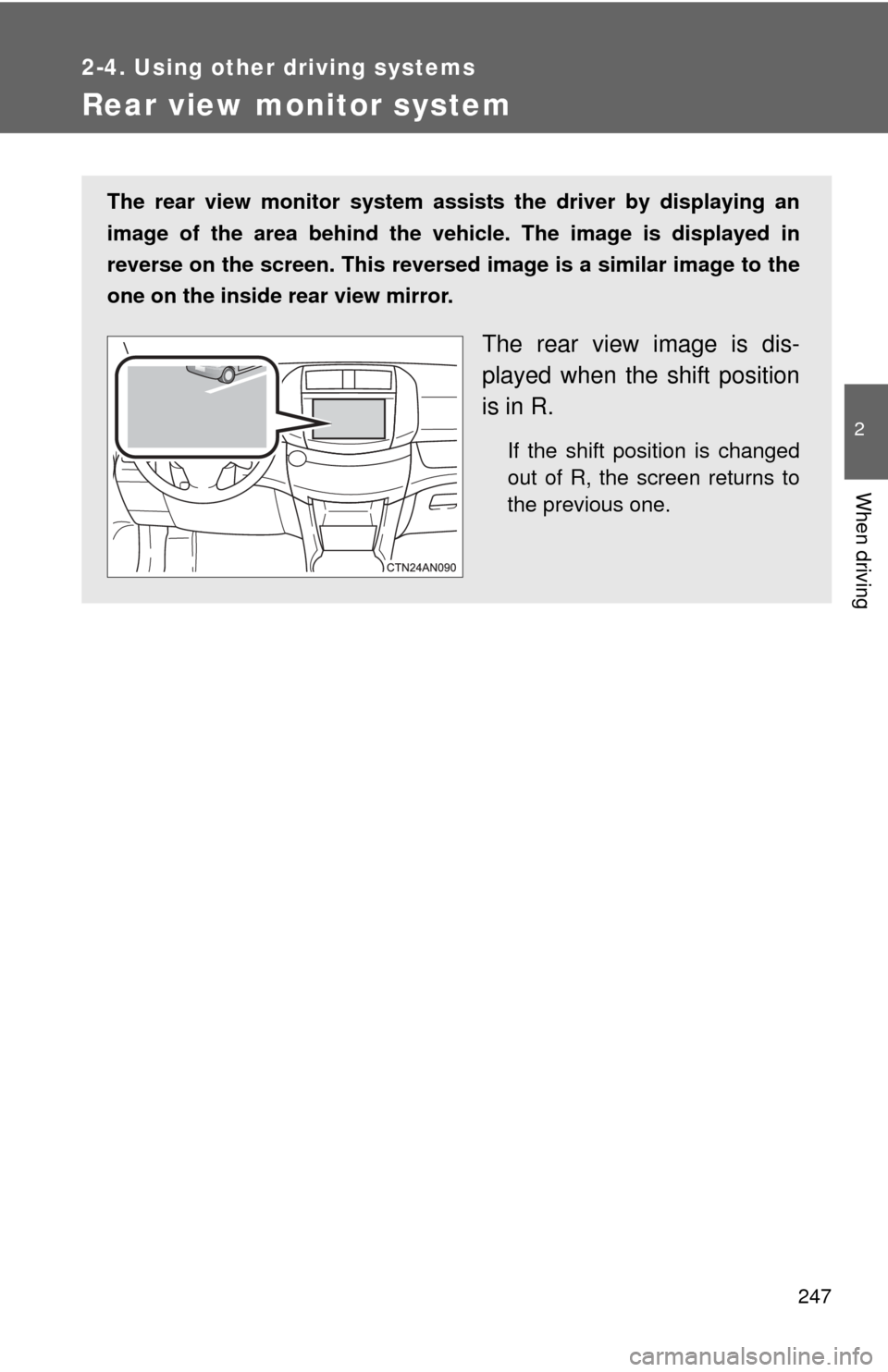
247
2-4. Using other driving systems
2
When driving
Rear view monitor system
The rear view monitor system assists the driver by displaying an
image of the area behind the vehicle. The image is displayed in
reverse on the screen. This reversed im age is a similar image to the
one on the inside rear view mirror.
The rear view image is dis-
played when the shift position
is in R.
If the shift position is changed
out of R, the screen returns to
the previous one.
Page 248 of 520
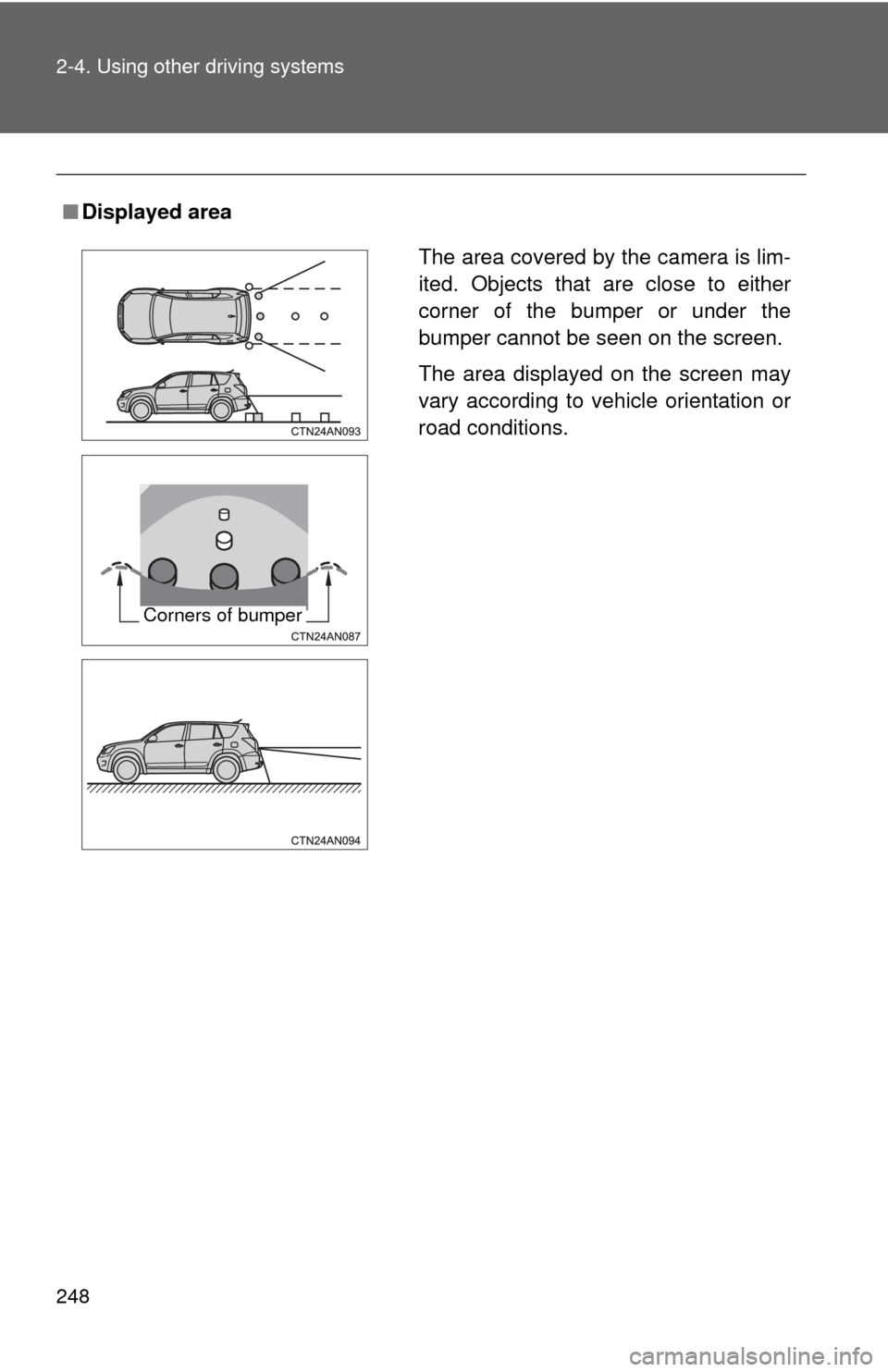
248 2-4. Using other driving systems
■Displayed area
The area covered by the camera is lim-
ited. Objects that are close to either
corner of the bumper or under the
bumper cannot be seen on the screen.
The area displayed on the screen may
vary according to vehicle orientation or
road conditions.
Corners of bumper
Page 250 of 520
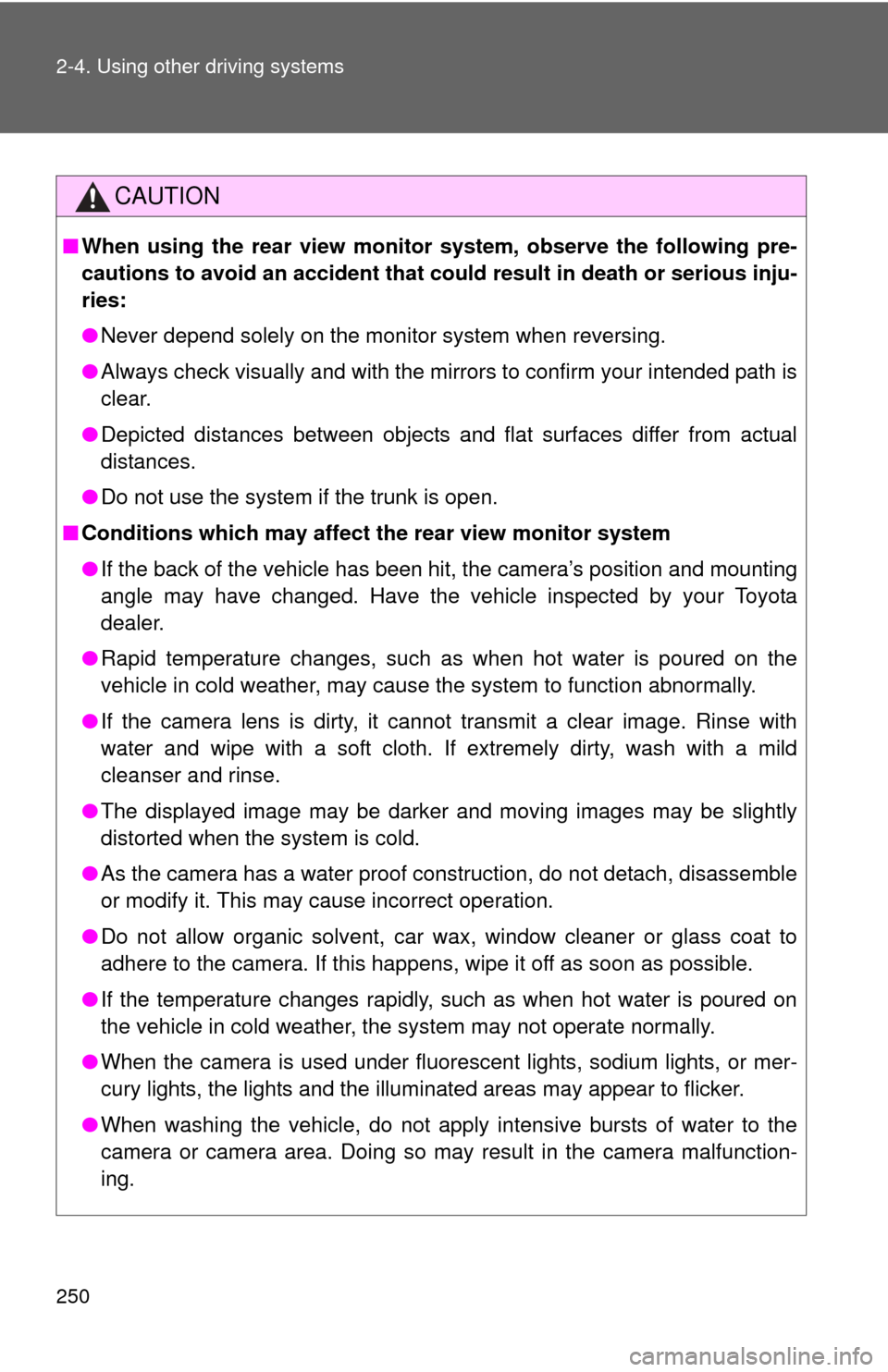
250 2-4. Using other driving systems
CAUTION
■When using the rear view monito r system, observe the following pre-
cautions to avoid an accident that coul d result in death or serious inju-
ries:
● Never depend solely on the monitor system when reversing.
● Always check visually and with the mirrors to confirm your intended path is
clear.
● Depicted distances between objects and flat surfaces differ from actual
distances.
● Do not use the system if the trunk is open.
■ Conditions which may affect the rear view monitor system
● If the back of the vehicle has been hit, the camera’s position and mounting
angle may have changed. Have the vehicle inspected by your Toyota
dealer.
● Rapid temperature changes, such as when hot water is poured on the
vehicle in cold weather, may cause the system to function abnormally.
● If the camera lens is dirty, it cannot transmit a clear image. Rinse with
water and wipe with a soft cloth. If extremely dirty, wash with a mild
cleanser and rinse.
● The displayed image may be darker and moving images may be slightly
distorted when the system is cold.
● As the camera has a water proof construction, do not detach, disassemble
or modify it. This may cause incorrect operation.
● Do not allow organic solvent, car wax, window cleaner or glass coat to
adhere to the camera. If this happens, wipe it off as soon as possible.
● If the temperature changes rapidly, such as when hot water is poured on
the vehicle in cold weather, the system may not operate normally.
● When the camera is used under fluorescent lights, sodium lights, or mer-
cury lights, the lights and the illuminated areas may appear to flicker.
● When washing the vehicle, do not apply intensive bursts of water to the
camera or camera area. Doing so may result in the camera malfunction-
ing.
Page 277 of 520

277
3-1. Using the air conditioning system
and defogger
3
Interior features
■Pre-climate (Remote Climate Control)
By setting the sched ule, the air conditioning system can be
turned on before getting in the vehicle. ( P. 5 3 )
Even if the schedule has not been set, for users who own a
smart phone, the air conditioning system can be turned on and
off when away from the vehicle. ( P. 5 8 )
■ Control panel
The operating section of the air conditioning panel uses capaci-
tive touch sensors. ( P. 290)
Eco mode
Driver’s side temperature
control Air outlet selectorFan speed
control
Off SYNC mode
Outside/recirculated
air mode
Automatic mode
Windshield defogger
HVAC
display Passenger’s side temperature controlCooling and
dehumidification
function on/off
Page 278 of 520
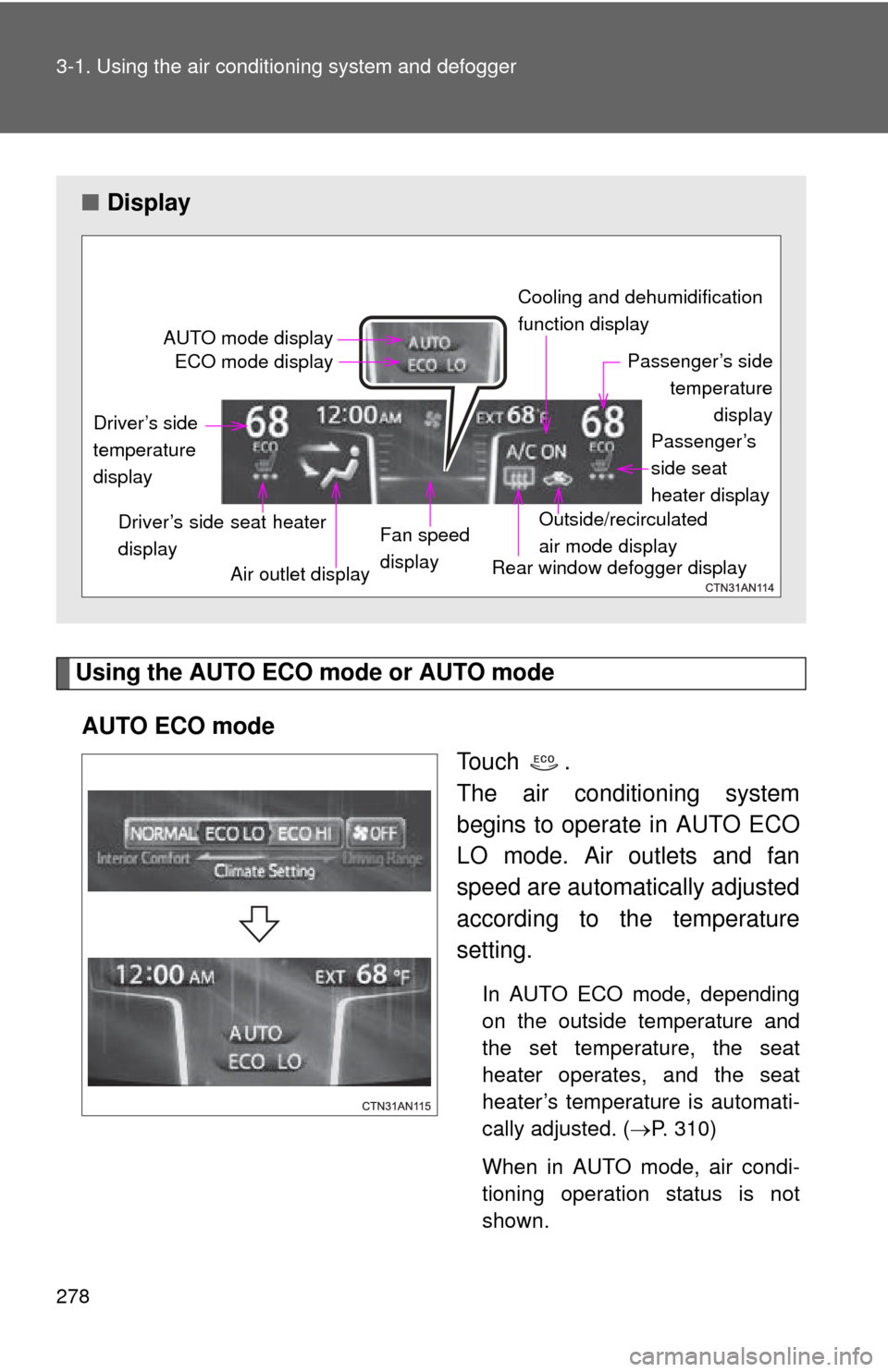
278 3-1. Using the air conditioning system and defogger
Using the AUTO ECO mode or AUTO mode
AUTO ECO mode To u c h .
The air conditioning system
begins to operate in AUTO ECO
LO mode. Air outlets and fan
speed are automatically adjusted
according to the temperature
setting.
In AUTO ECO mode, depending
on the outside temperature and
the set temperature, the seat
heater operates, and the seat
heater’s temperature is automati-
cally adjusted. (P. 310)
When in AUTO mode, air condi-
tioning operation status is not
shown.
■ Display
AUTO mode display
ECO mode display Cooling and dehumidification
function display
Passenger’s sidetemperature display
Passenger’s
side seat
heater display
Outside/recirculated
air mode display
Rear window defogger display
Fan speed
display
Air outlet display
Driver’s side seat heater
display
Driver’s side
temperature
display
Page 279 of 520
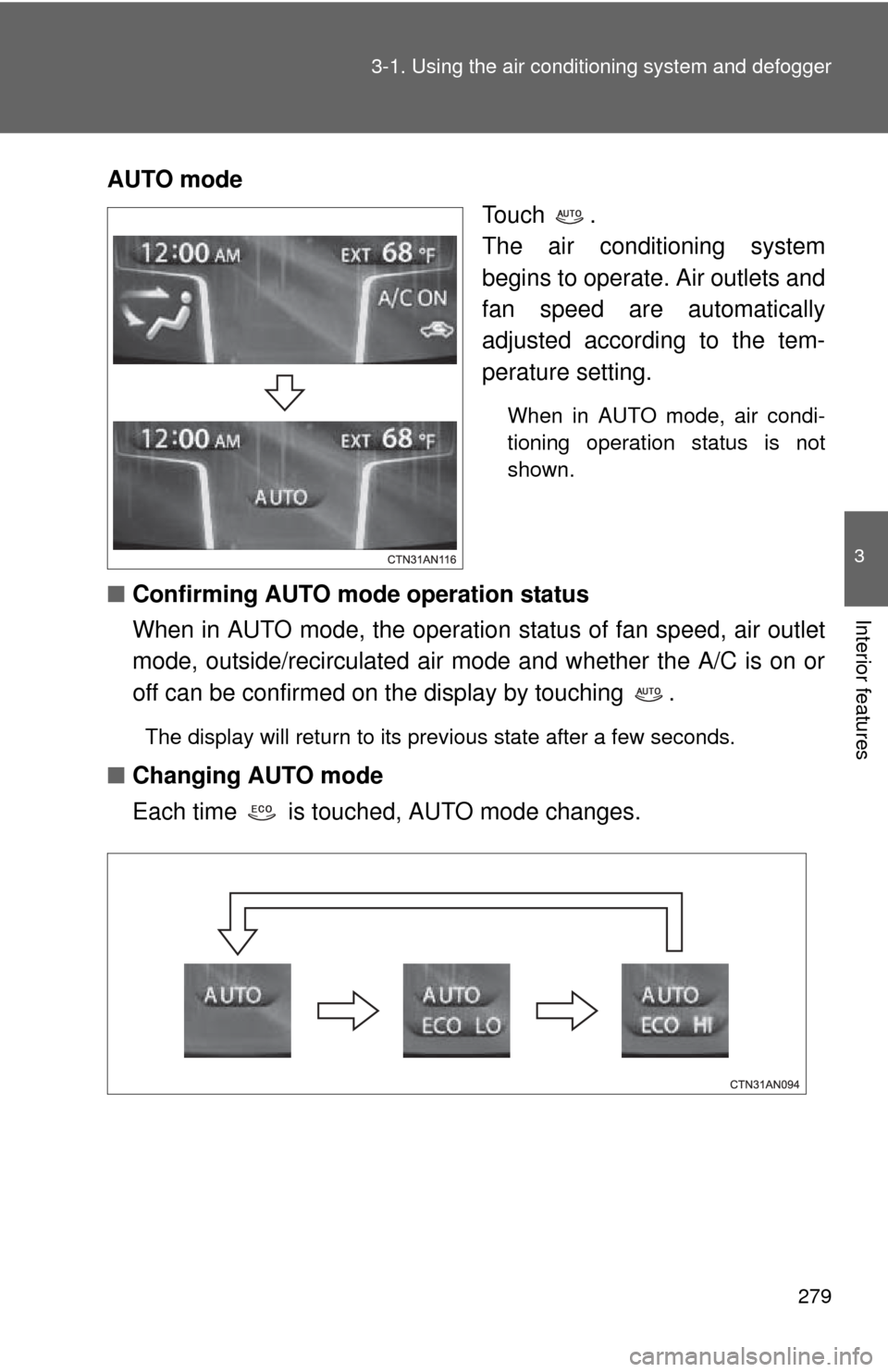
279
3-1. Using the air conditioning system
and defogger
3
Interior features
AUTO mode
Touch .
The air conditioning system
begins to operate. Air outlets and
fan speed are automatically
adjusted according to the tem-
perature setting.
When in AUTO mode, air condi-
tioning operation status is not
shown.
■Confirming AUTO mode operation status
When in AUTO mode, the operation status of fan speed, air outlet
mode, outside/recirculated air mode and whether the A/C is on or
off can be confirmed on the display by touching .
The display will return to its previous state after a few seconds.
■Changing AUTO mode
Each time is touched, AUTO mode changes.
Page 282 of 520
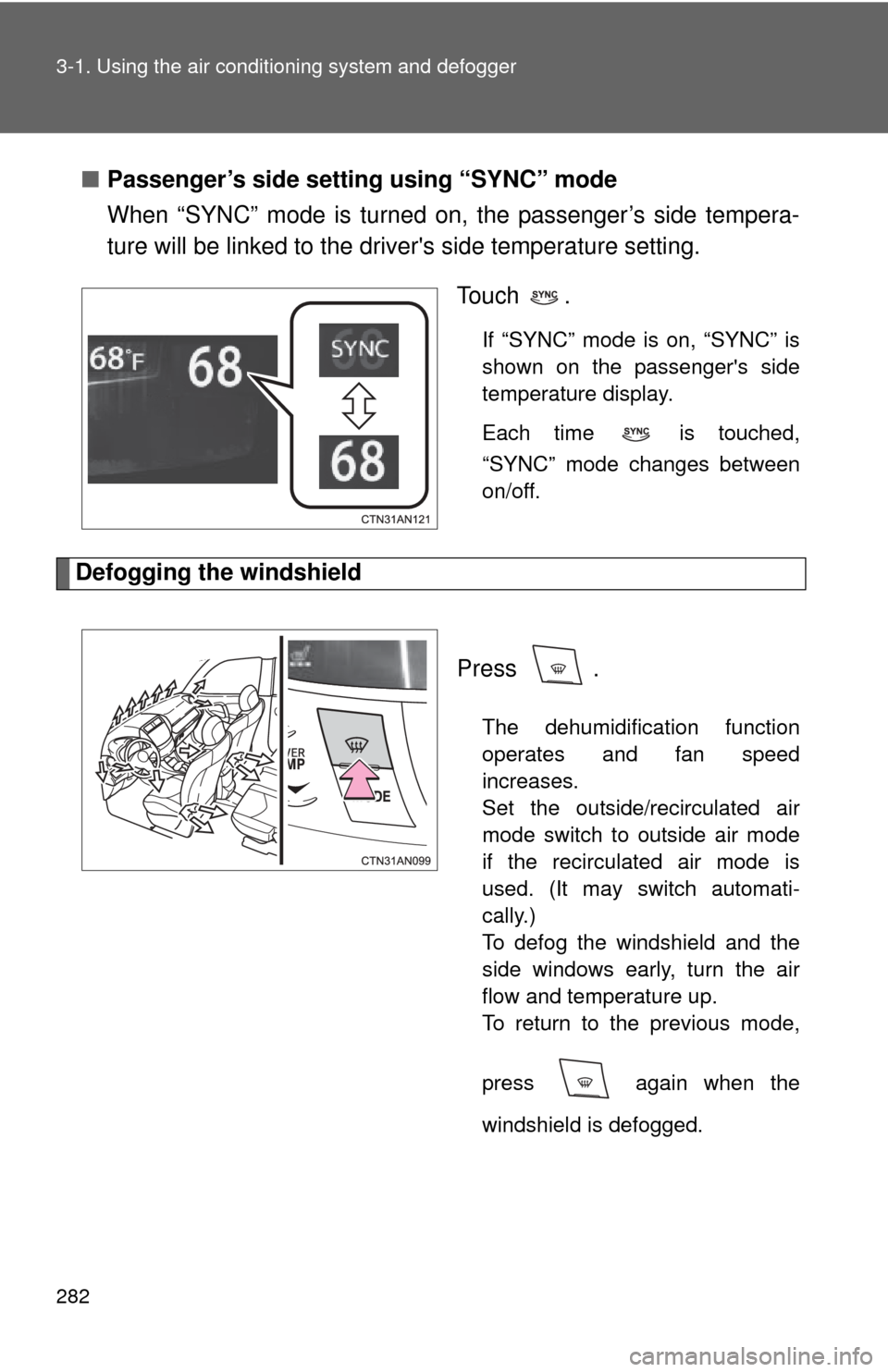
282 3-1. Using the air conditioning system and defogger
■Passenger’s side setting using “SYNC” mode
When “SYNC” mode is turned on, the passenger’s side tempera-
ture will be linked to the driv er's side temperature setting.
To u c h .
If “SYNC” mode is on, “SYNC” is
shown on the passenger's side
temperature display.
Each time is touched,
“SYNC” mode changes between
on/off.
Defogging the windshield
Press .
The dehumidification function
operates and fan speed
increases.
Set the outside/recirculated air
mode switch to outside air mode
if the recirculated air mode is
used. (It may switch automati-
cally.)
To defog the windshield and the
side windows early, turn the air
flow and temperature up.
To return to the previous mode,
press again when the
windshield is defogged.